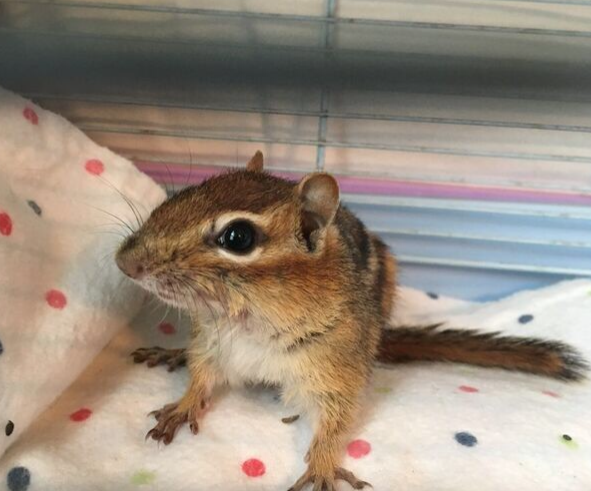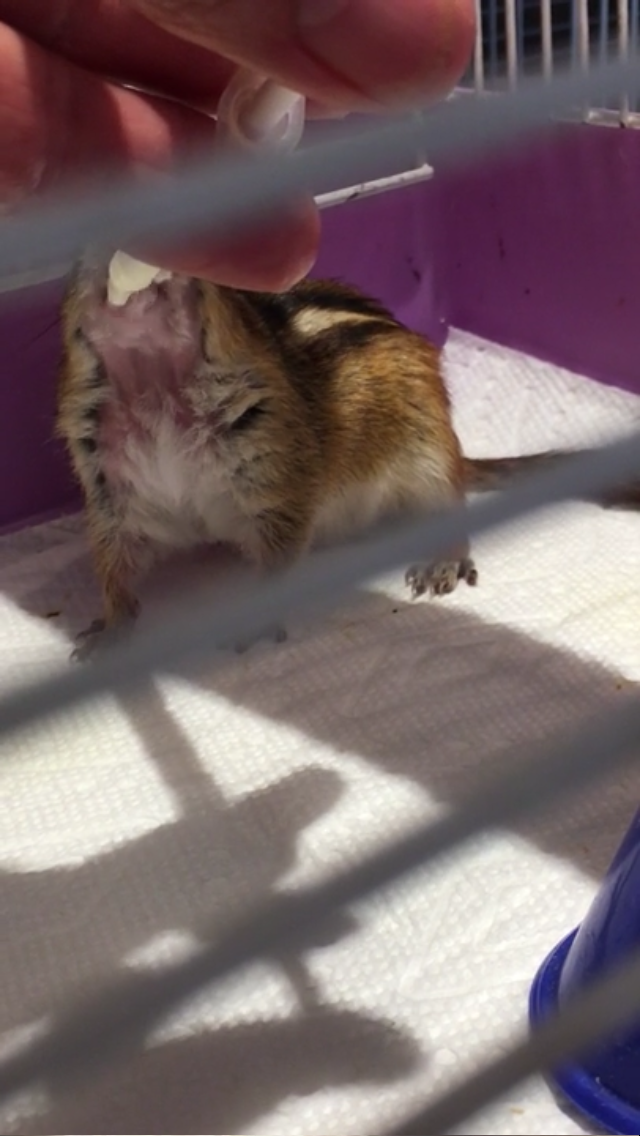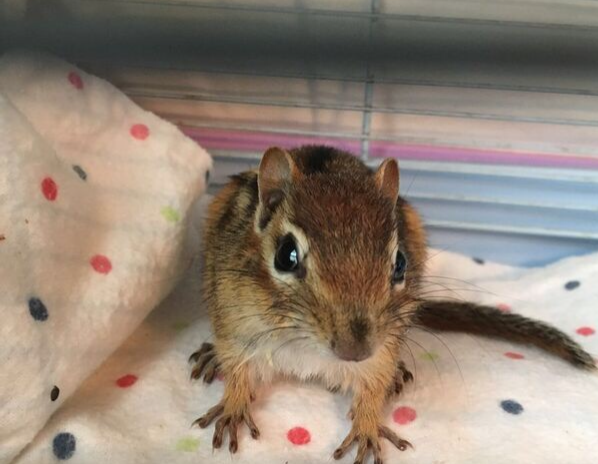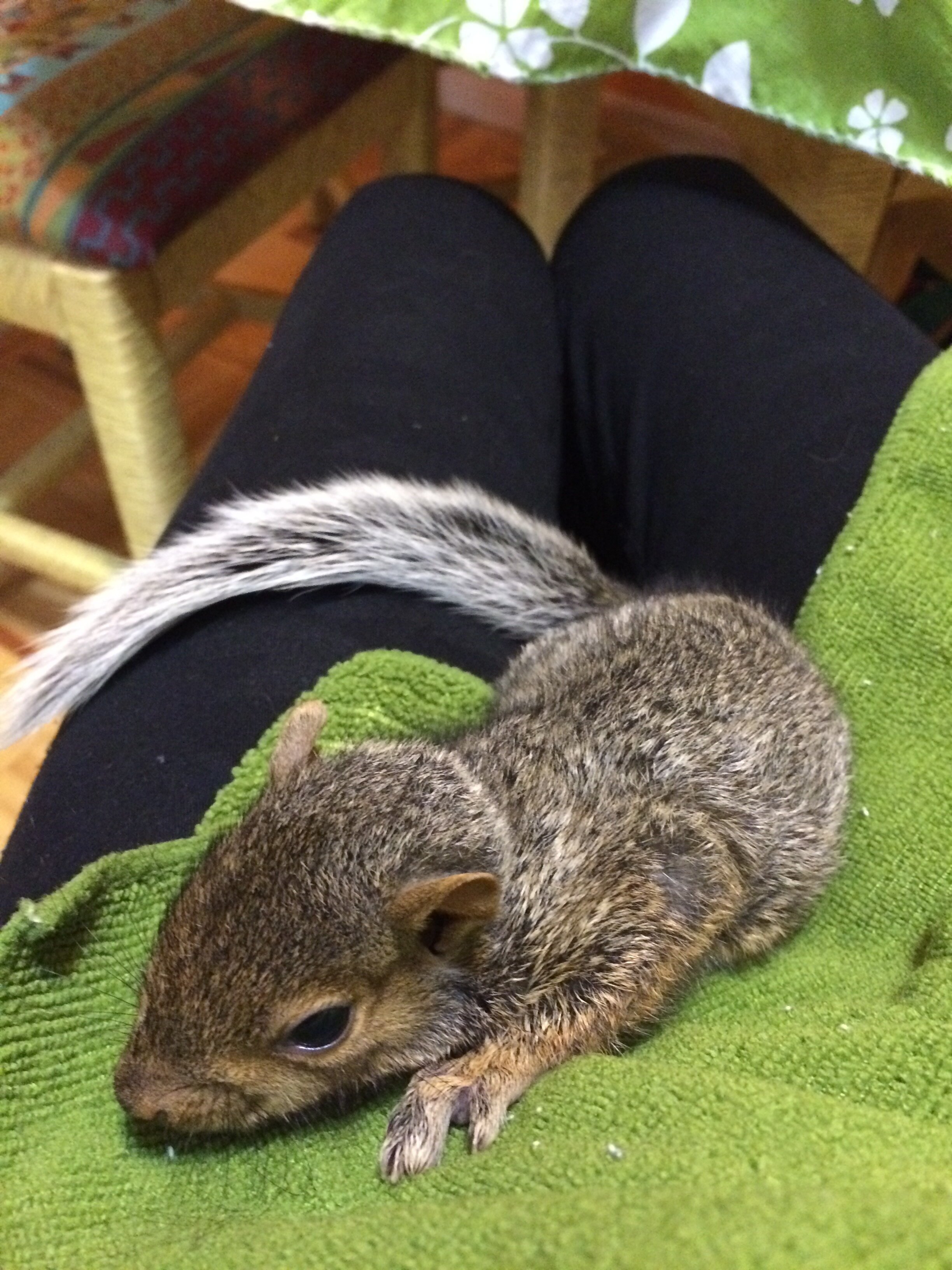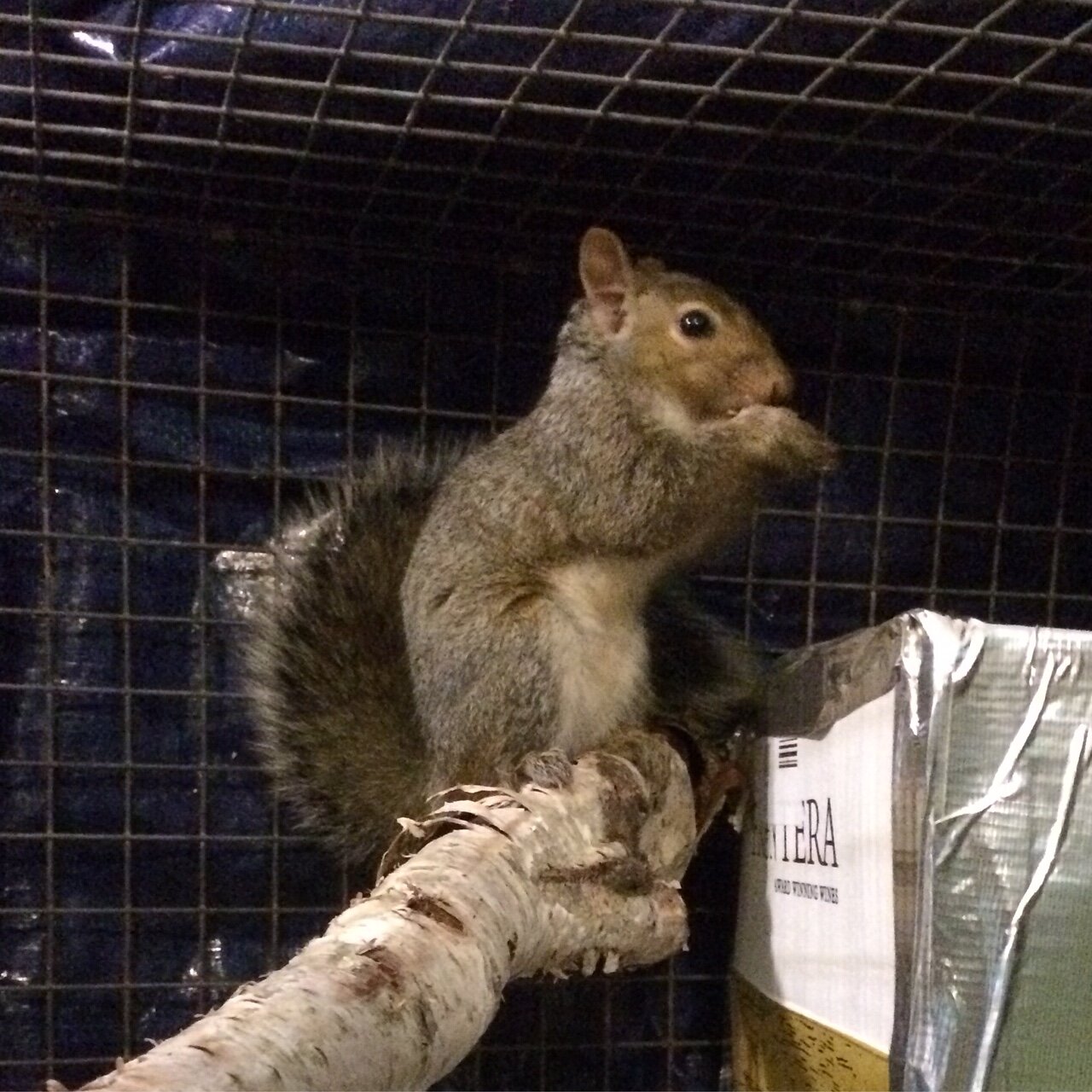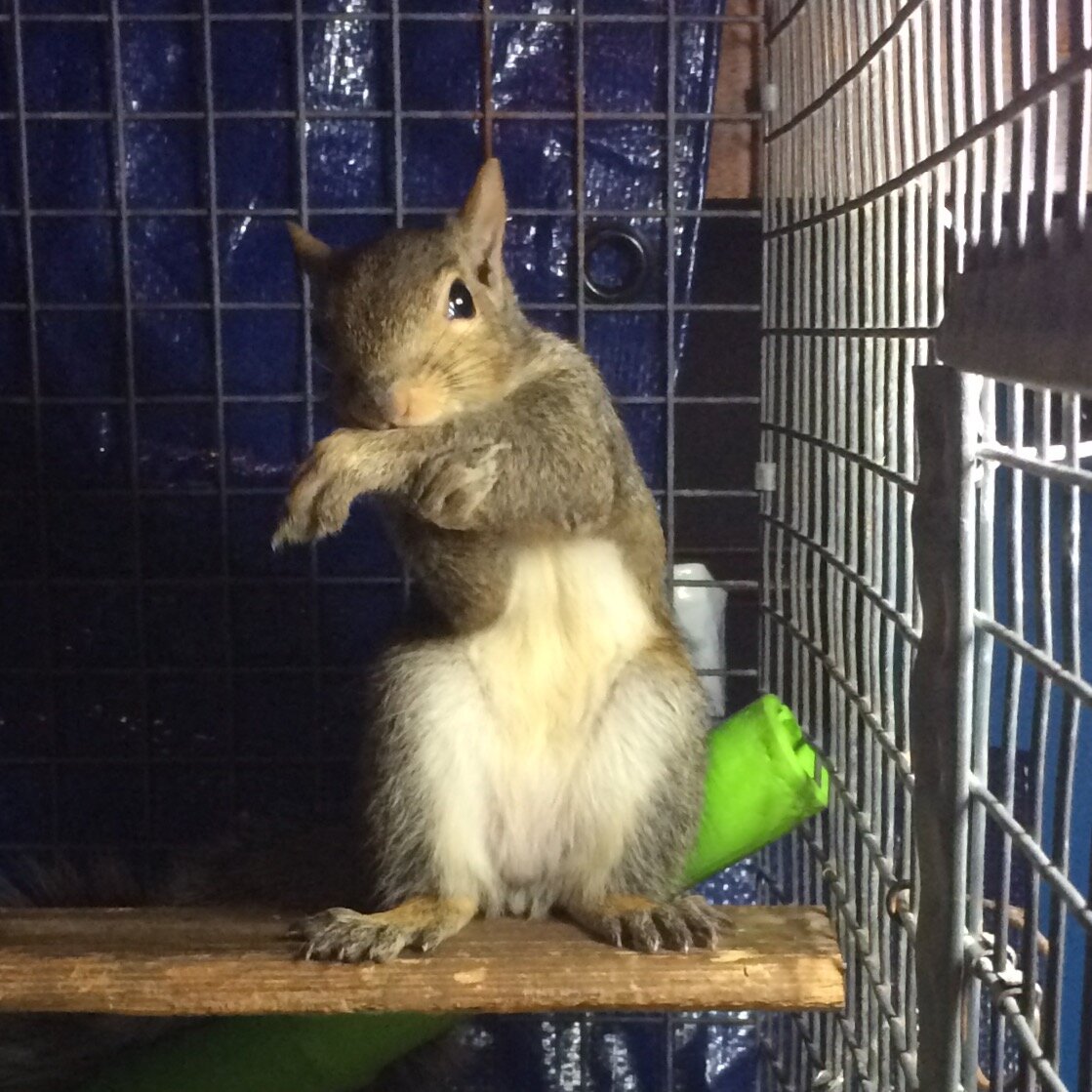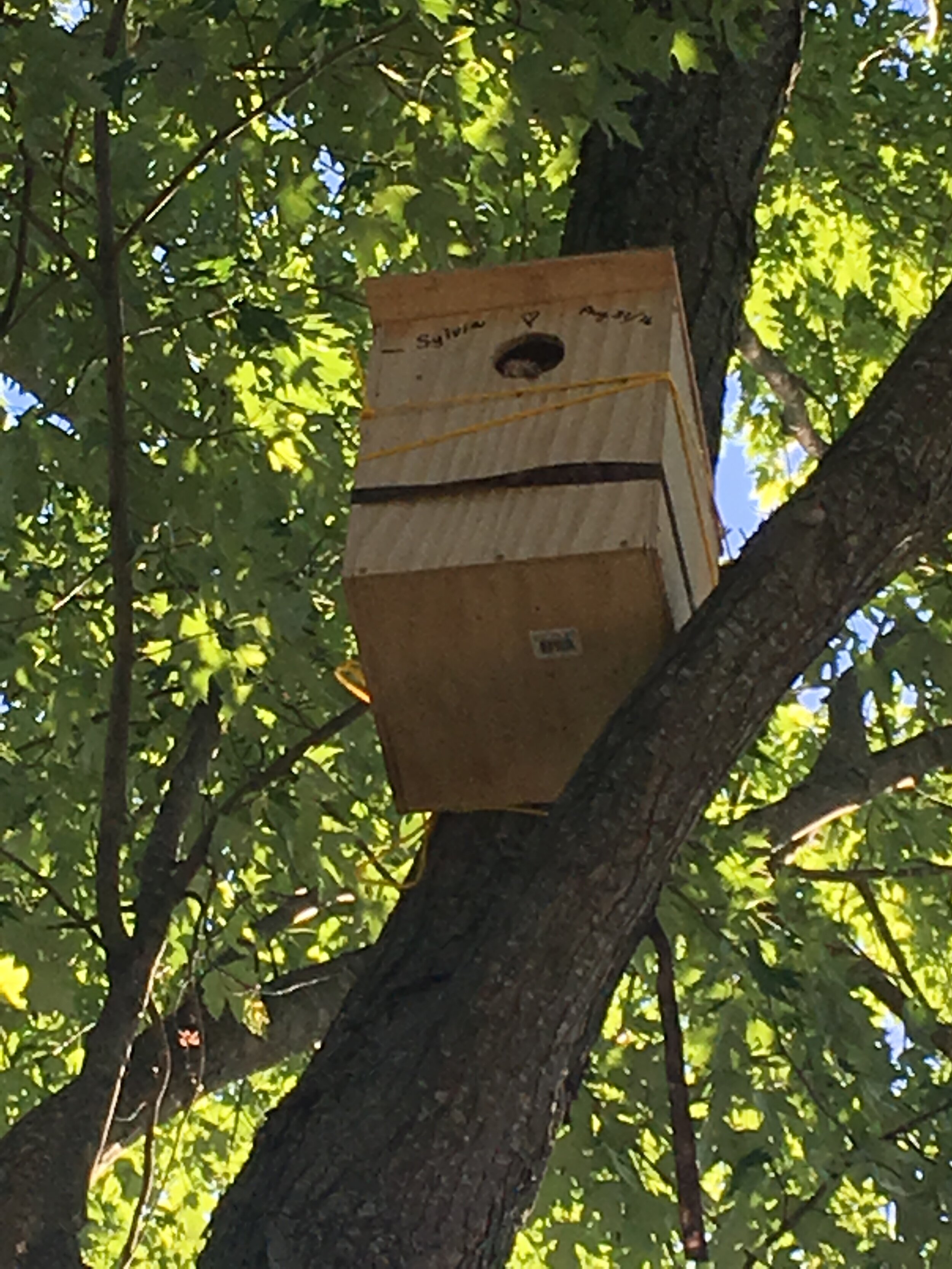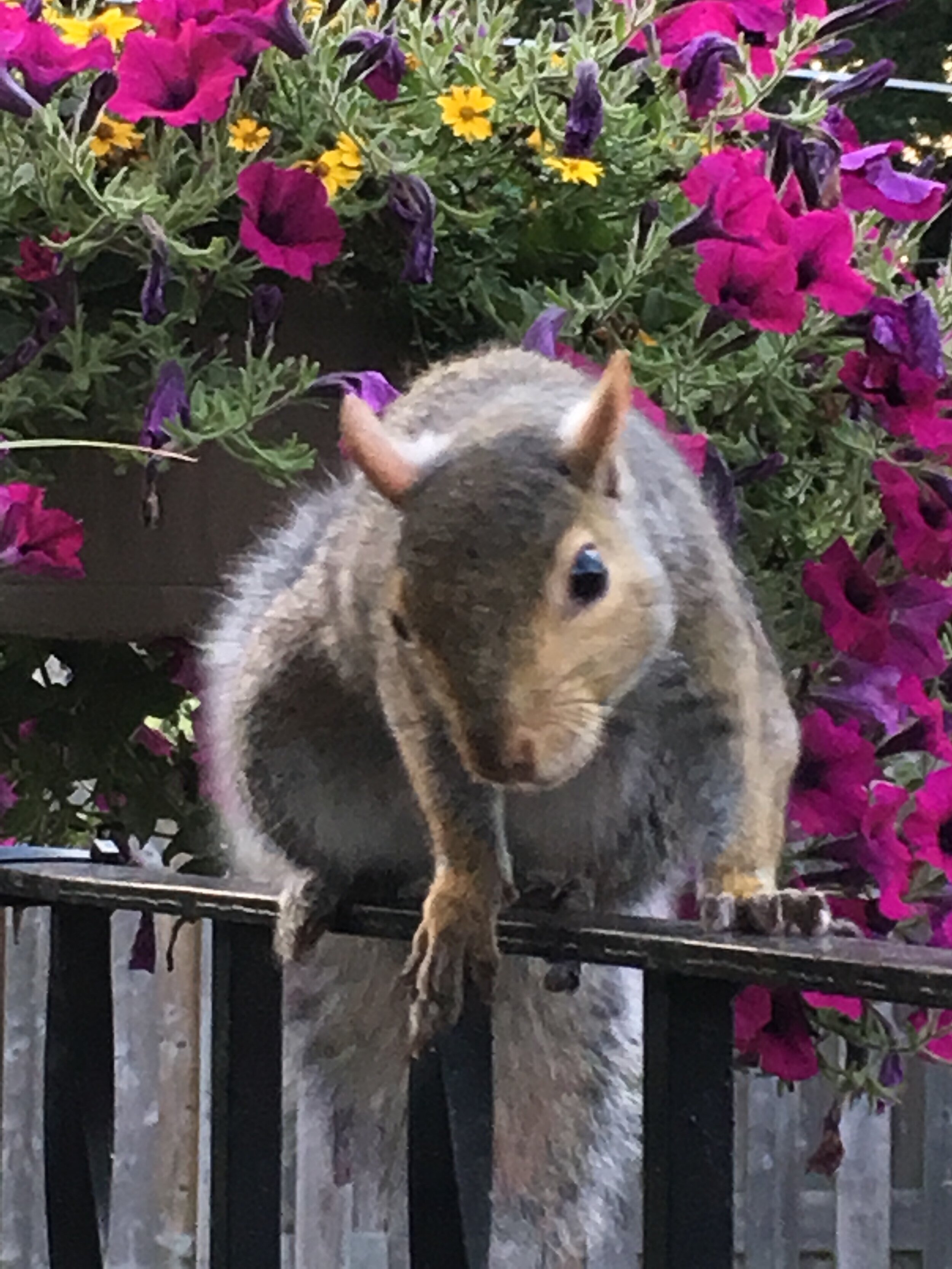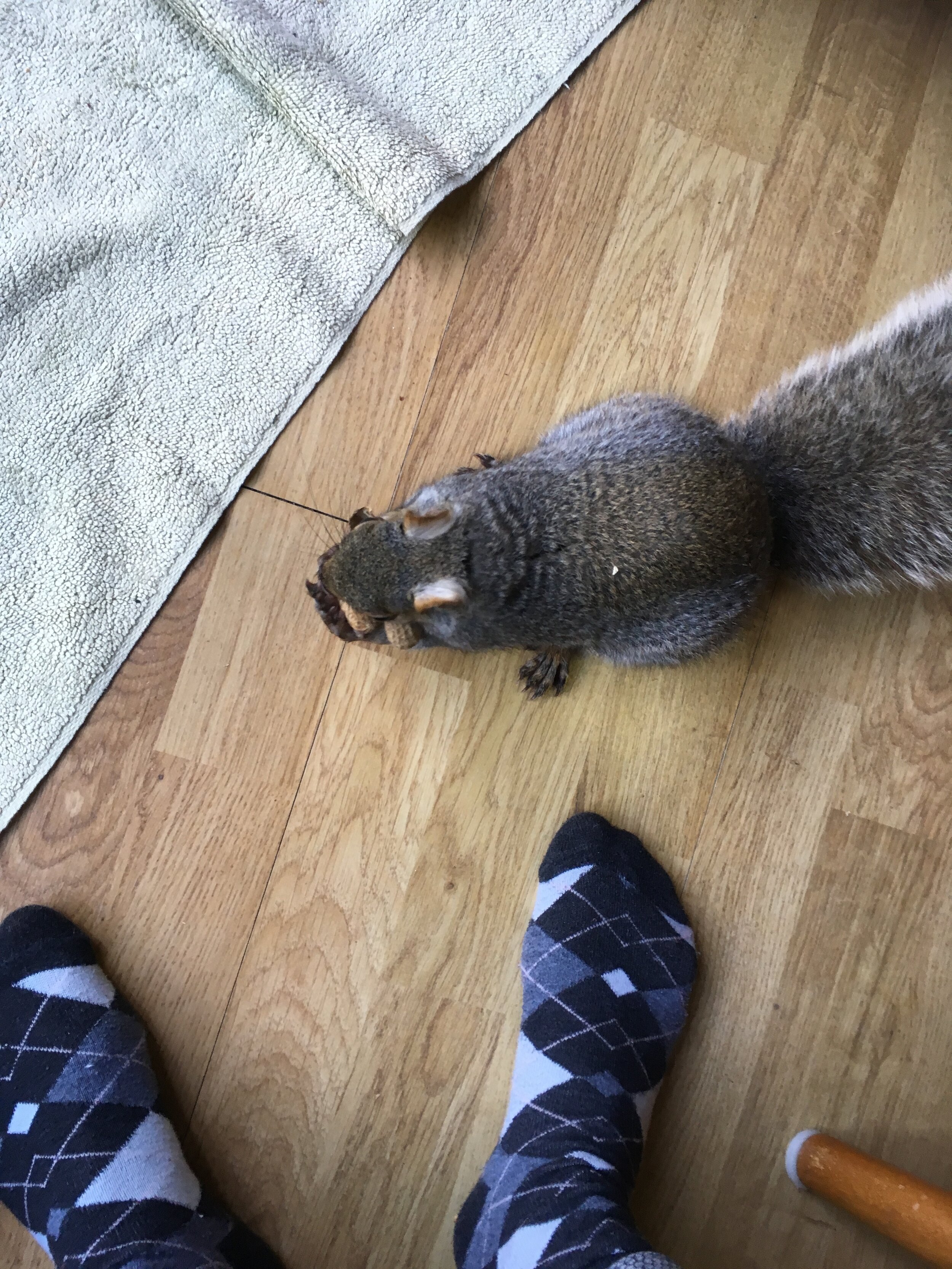Over the years we have helped to rescue, rehabilitate, and release thousands of wild animals.
Below are just a few featured animals whose care we’ve supported in years past.
Click on their photos to read their stories!
Artist Trading Cards
Each year, Shelly Hawley-Yan of On Dragon Wings Studio creates a set of limited edition Artist Trading Cards featuring animals saved by Rehabilitation Organizations NWRF supports.
See below to read about the stories behind a few of the animals featured in the 2018-2020 sets!
Visit our Donation page to support us and receive a set of Artist Trading Cards as a thank you gift.
Chloe
Sometimes animals come into Procyon Wildlife Rehabilitation Centre in really bad shape, and Chloe was no exception. No one really knows what happened to her, but she was thought to have been hit by a car. Chloe was a big, beautiful adult opossum and she was such a sweetheart; but she was in need of a lot of care.
She had a broken jaw, frostbite on the tip of her tail, and appeared to have also suffered head trauma. Recovery went day by day with a lot of love, hope and prayers sent her way. She spent quite a bit of time in an incubator on oxygen as she struggled to breath with everything swollen. Her broken jaw and her sinus cavity needed to heal. She was on medication and a liquid smoothie (which she loved!!).
She was fed by syringe at the beginning, then one day she started lapping up her smoothie herself. She would come out of her nap to get to the smoothie, she loved it so much - that was a huge step forward. She then graduated to a nice cage, gradually soft foods after that, getting better and better every day until she was able to be put outside. Soon would be her release day, to be free again. Chloe touched everyone’s hearts!
Story by Jennifer Howard, Procyon Wildlife Rehabilitation Centre
Tabby
Tabby was a Midland Painted Turtle; a female making her way across a road. But Tabby didn’t look for cars, after all she was a turtle on a mission! Her tiny little brain was focused on that adventure. She was hit by a car, landing on the shoulder of the road on her back. She was injured, scared and stuck. If not for a kind man who saw her, turned around and went back to check her, she would not have made it.
He took her home and called Ontario Turtle Conservation Centre. They made arrangements to take her first thing in the morning. She spent the night warm and comfortable in a nice cozy dry container in a dark, calm room. Upon arrival at the hospital the next day she was checked all over, given pain meds and wounds were treated.
11 months later Tabby went home all healed, all better, ready to go adventuring again! She was held up to the view of her beautiful wetland. Tabby looked all around and started paddling in the air. She was ready to start her life again. Taken further away from the road she was gently put into the water's edge. She looked up at the kind human releasing her, said thank you, and swam away. Her new adventure began.
Story by Jennifer Howard, Procyon Wildlife Rehabilitation and Education Centre
Bess
Porcupines are amazing little creatures, and this little girl we named Bess certainly stole the heart of everyone who cared for her. A kind person found her acting not quite right, clearly in distress. Little Bess the porcupine was taken to a wildlife rehabilitation facility where she was thoroughly examined. She was very good for the rehabber who checked her out, despite being in so much distress. She had such a severe infection and nasal discharge that it had entered one of her eyes, causing possible permanent blindness. The other eye was also infected though not to such an extent. Bess was prescribed medicated eye drops, in an effort to save at least one but hopefully both eyes. Our next challenge was finding a way to get these drops into her eyes. Porcupines are quite mellow but since they normally spend their days wandering around the forest looking for yummy branches, eye drops are not something they are accustomed to! So we gave her some very tasty treats, and she loved them! Pumpkin, chopped up apples, and tasty bananas; she was in heaven! And we got the drops in. Bess continued to get regular check-ups from an eye doctor, but unfortunately only one eye recovered and she would be permanently blind in the other. Her good eye recovered well and she was ready to be released. Bess was a beautiful little porcupine. Good luck in the wild, Bess, we are all rooting for you; you are one amazing little life!
Story by Jennifer Howard, Procyon Wildlife Rehabilitation and Education Centre
Albert
Albert is an adult male that was found injured on a sidewalk, with damage to his neck. He was taking Fox Valley from a syringe well (while being held wrapped in a blanket) but on about the second day he escaped and got under my dryer! I was able to safely capture him, then I started to feed him in his cage and he was great to stand up and take up to 3ml each feeding. With a full tummy he would even enjoy a pet on his back and head. A few months later he was eating well - lots of nuts and veggies and was very active during the day. Soon he was successfully released into a woodpile near where he was found. He was a very sweet gentleman and a delight to care for! Browse through some photos of Albert below!
Story by Carol-Lynn McElheran
Jewel
This young fox, so beautiful and healthy, caught my attention romping with her 2 siblings. As time went by I noticed a change in her appearance. She started losing her fur, getting thin, then getting sores and crusty eyes. She couldn’t hunt, was clearly in trouble, and needed help. So we helped her! We caught her using a live trap with food and she was transported to a wildlife rehabilitation facility. We discovered that she had mange - something that is common in foxes but very unpleasant and nasty if not treated. Mange is easily treatable and slowly but surely she got better. After a few months the mange was gone, her fur had grown back, and her sores had healed. It was time for release back to the wild! One year later this young fox and I crossed paths again. She recognized me, and curled up under a nearby pine tree close to the den where she’d been born. I named her Jewel, and over the next couple months we had many beautiful encounters. I had saved her life; I acted fast and she got the help she had needed. It’s now a few years later and I still see her making her rounds. She is healthy and has developed great ways to deal with our human world - likely thanks to lessons that her parents taught her. She is healthy and free and hopefully now raising her own family.
Story by Jennifer Howard, Procyon Wildlife Rehabilitation and Education Centre
Sylvia
This sweet orphan approached a person for help (as wildlife often does). She was rehydrated with pedialyte and then fed Fox Valley formula (the gold standard for rehabbing). As she grew, fruits and vegetables were introduced and later seeds and nuts also. She was released with her squirrel box in spring after the leaves had opened. She was friends with those who cared for her and after her release, she continued to visit and always remembered her friends. Sylvia certainly was a very sweet squirrel! Browse through some photos of Sylvia below!
Story by Carol-Lynn McElheran
Little Deer
Story coming soon!
Tinkerbell
Tinkerbell came out of the bitter cold on January 2nd. We were out of the country and didn’t believe the caller really had a Southern Flying Squirrel. Turned out to be correct! This tiny flyer came from far Northern Ontario where they are so rare they aren’t even listed as a resident species. She weighed only 40 grams – a tiny juvenile with a broken hip and ankle, and very undersized for her age. We contacted the experts - vets and rehabbers all over North America looking for the best information on how to feed and care for her.
Canadian Southern Flyers are so rare, there was very little information available. In the end, we began to treat her injuries as we do for other squirrel species. We fed her the squirrel formulas with rehydration ingredients - and tiny Tinkerbell began to thrive. Tinkerbell recovered from the injuries and was soon “flying” around her large room from soft surface to soft surface. She happily devoured wax worms, calcium powder, fruit, vegetables and made a full recovery. Being a sociable fairy, she made friends with the cottontails in her warm, large, safe space and was found often snuggled into their soft fur.
Southern flyers usually grow to about 90 grams in adulthood. They are very sociable and families often number more than 50 individuals! When released, they need return their own family, or be placed into a new community. This tiny, magical creature only grew to a maximum weight of 60 grams. Her tiny repaired joints would not have withstood the cold of the far north and her family could not be found - so she could not be released back into the wild.
Instead, Tinkerbell lived a long and happy life with her caregivers. She had a large airy room to glide in. She loved to spend time cleaning her many soft pockets, eating a large variety of fresh food, snuggling with other species of furry friends and softly nipping the fingers of her caregiver.
Tinkerbell was a wild, magical, beautiful creature!
Story by Vickie Janetos, NWRF
Stinkerbell
Stinkerbell’s story coming soon!
Gus
Gus’ story coming soon!
Molly
Mollys’ story coming soon!
